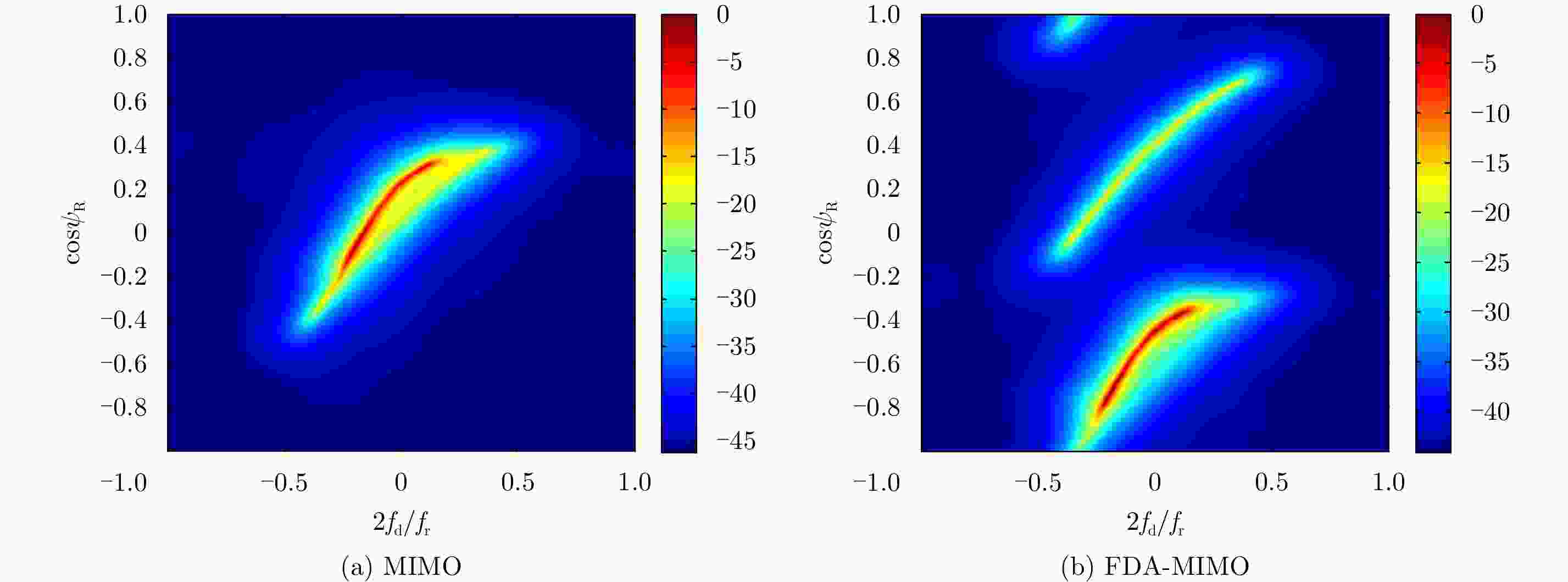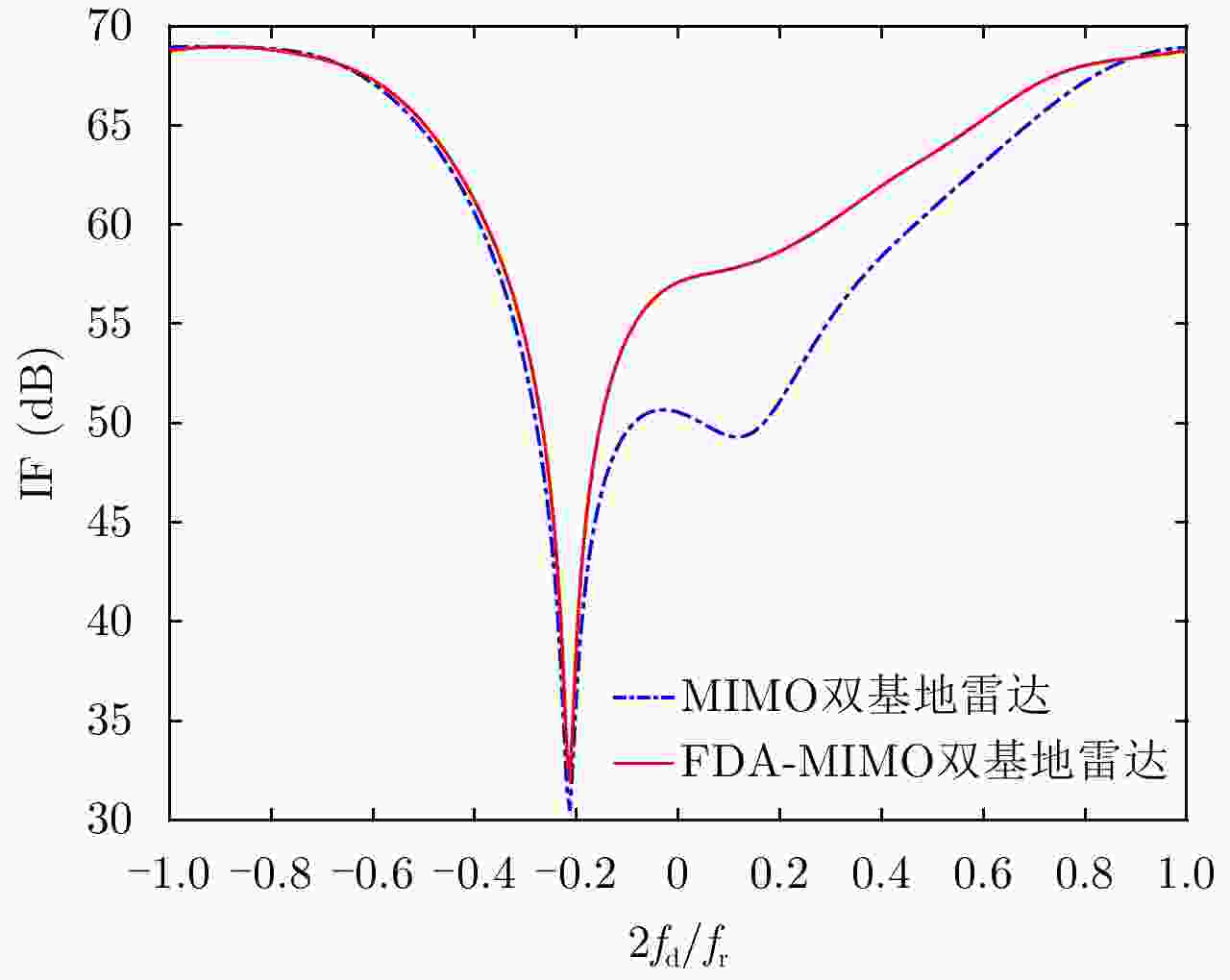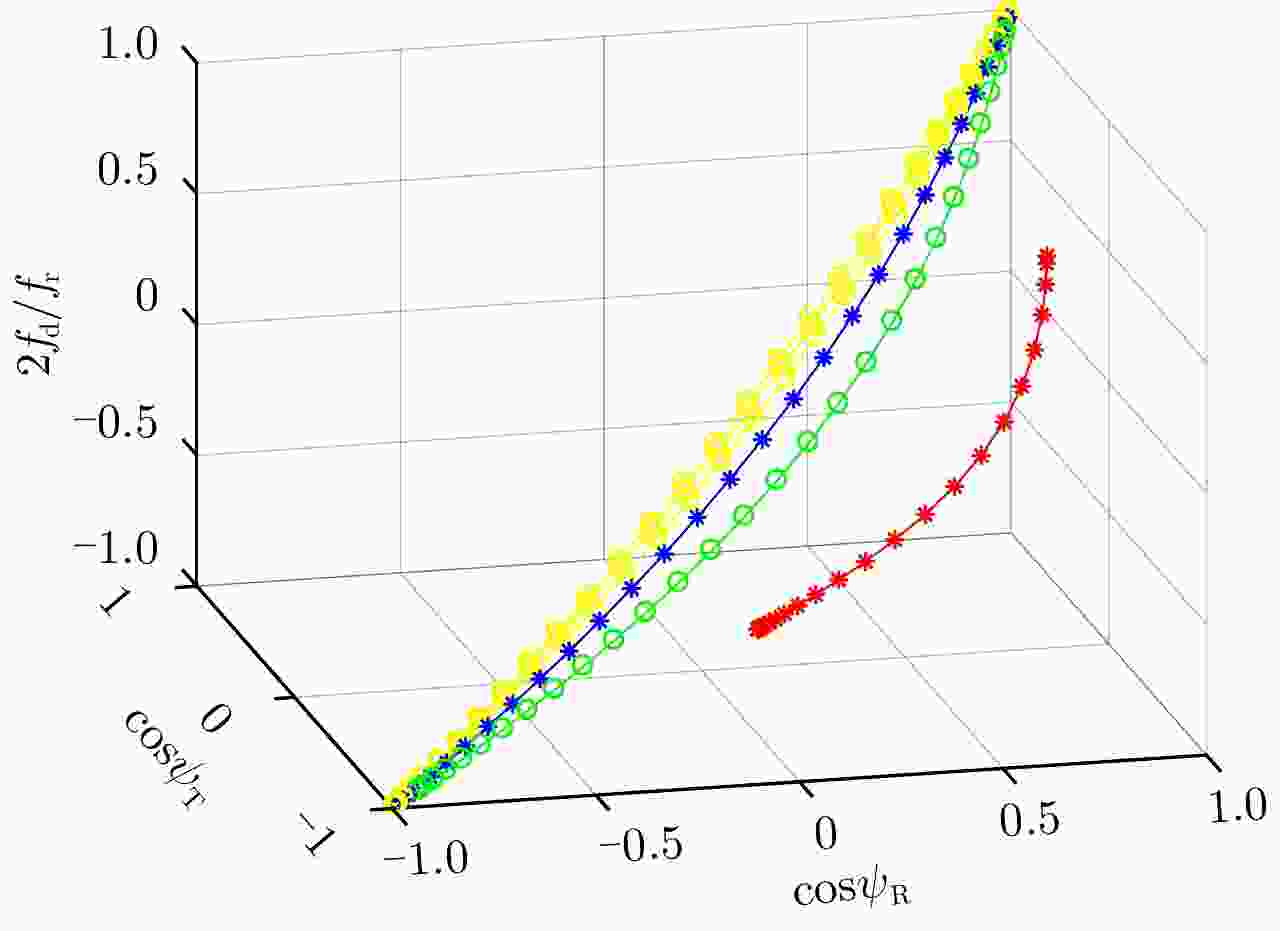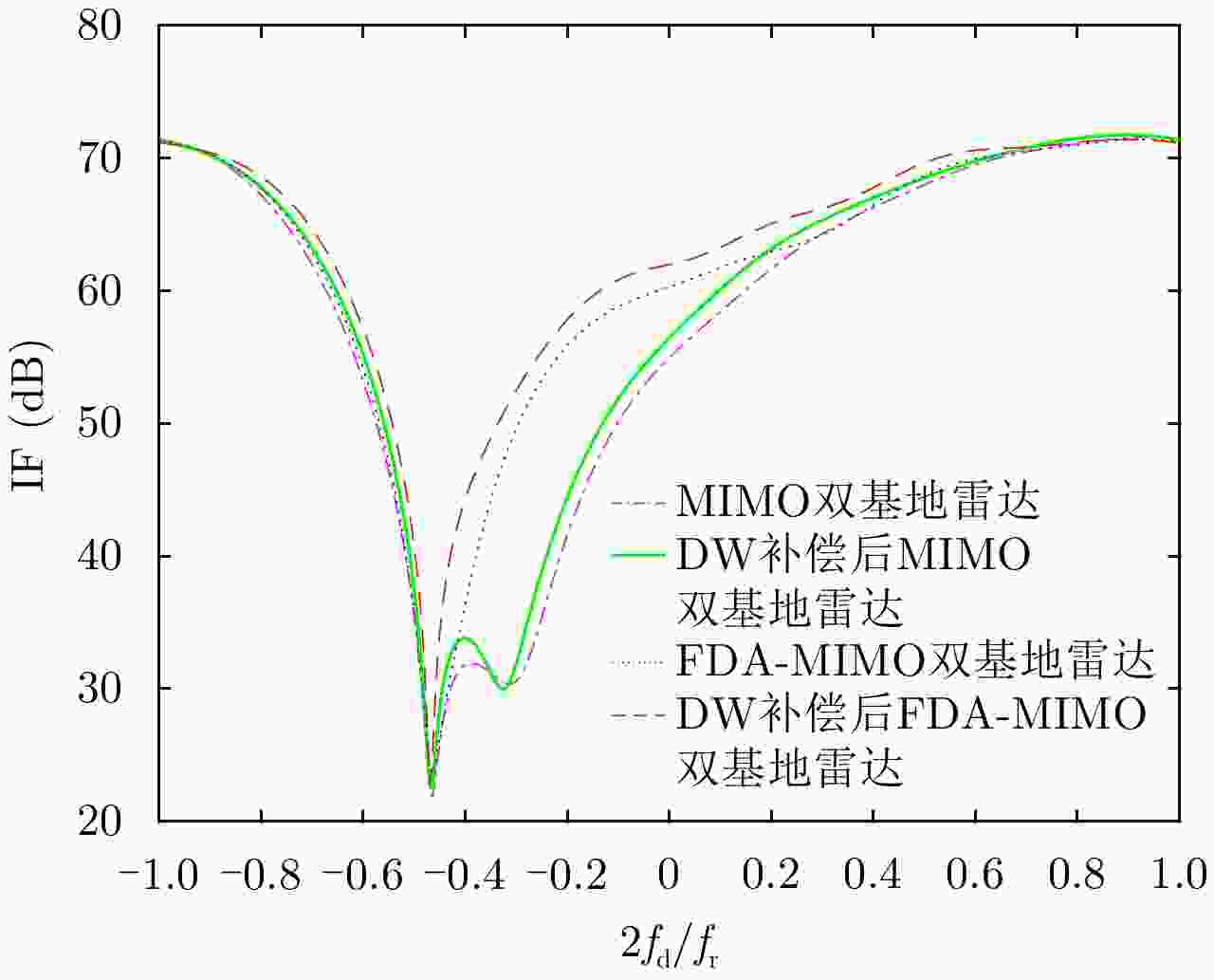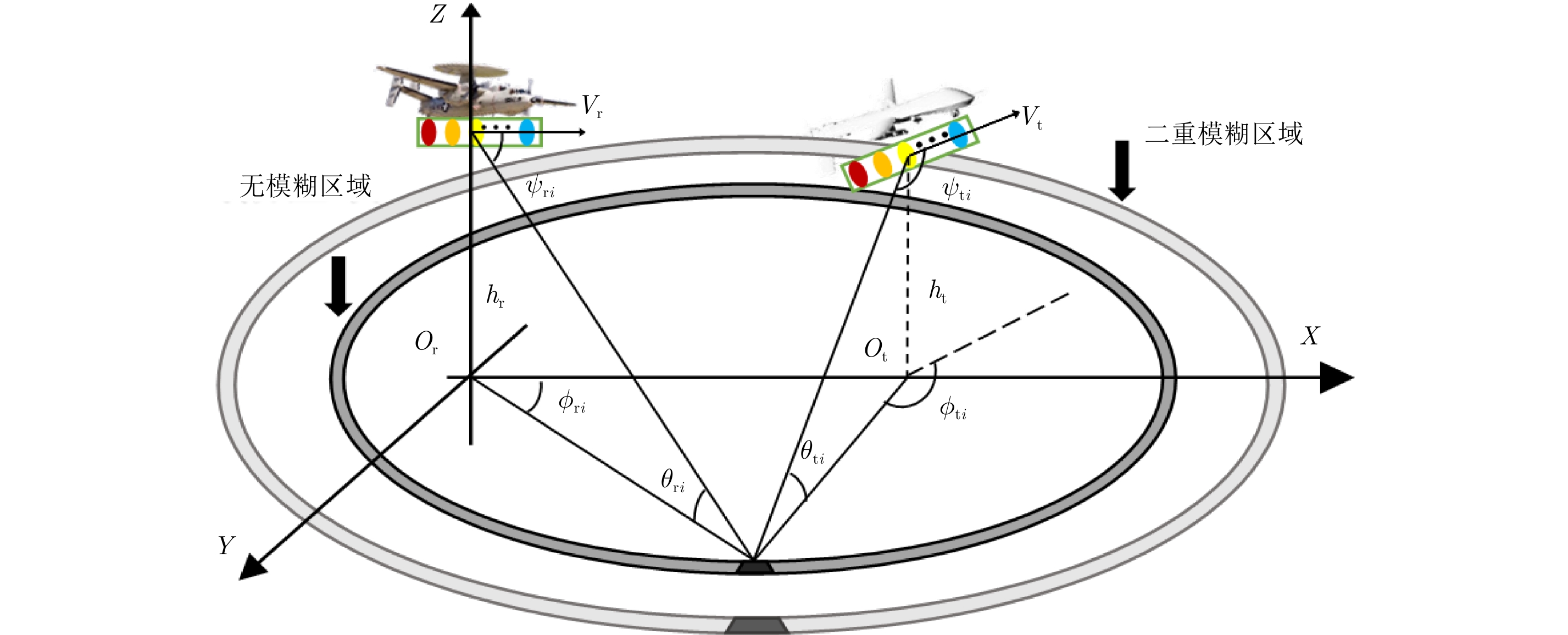A Range-ambiguous Clutter Suppression Method for MIMO Bistatic Airborne Radar
-
摘要: 正侧视阵MIMO(Multiple-Input Multiple-Output)双基地雷达系统具有严重的距离依赖问题和杂波谱展宽现象,该文分析其杂波特性,提出了一种距离模糊杂波抑制方法。该方法在传统的MIMO双基雷达中引入距离相关的相位项,从而提供额外的自由度,通过该相位项的距离信息实现不同距离的杂波分离,并进一步对其进行有效抑制。从而解决了双基地预警雷达大场景下地面杂波距离杂波模糊的问题,仿真结果显示该方法的正确性,并且和已有的DW(Doppler Warping)距离模糊杂波抑制方法进行比较,使用IF(Improve Factor)谱线对抑制结果进行对比,显示该方法有更优的性能。Abstract: The ground clutter of sidelooking Multiple-Input Multiple-Output (MIMO) bistatic radar has severe problems of range-dependence and clutter spectrum spreading. In this paper, the clutter characteristics of bistatic airborne radars are analyzed and a method of range-ambiguous clutter suppression is proposed. This method employs the range-dependent phase term in the traditional MIMO bistatic radar to provide extra degrees of freedom. The range information of the phase term enables clutter separation with different ranges and consequent suppression. Thus, a range-ambiguous clutter suppression for bistatic airborne early warning radars is achieved. The simulation results show the accuracy of the method. By a comparison with the existing Doppler Warping (DW) and clutter suppression method with the Improved Factor (IF) line, the results showed that the method has better performance, which proved the effectiveness of ambiguous clutter suppression in MIMO bistatic radars.
-
表 1 双基地雷达仿真参数
Table 1. Simulation parameters of bistatic radar
参数 参数值 参数 参数值 发射阵元数 6 发射机高度 12 km 接收阵元数 6 接收机高度 12 km 参考工作频率 1.104 GHz 双基基线长度 50 km 阵列阵元间距 0.0543 m PRF 2434.8 Hz 发射机速度 140 m/s 相干脉冲数 8 目标距离 64.964 km 频率增量 1217.4 Hz 注:在传统MIMO双基地雷达中没有 $\Delta $f 项或者 $\Delta $f 为0 -
[1] Willis N J and Griffiths H D. Advances in Bistatic Radar[M]. Raleigh: Scitech Pubishing, 2007: 15–31. [2] Behner F, Reuter S, Nies H, et al. Synchronization and processing in the HITCHHIKER bistatic SAR experiment[J]. IEEE Journal of Selected Topics in Applied Earth Observations and Remote Sensing, 2016, 9(3): 1028–1035. DOI: 10.1109/JSTARS.2015.2471082 [3] Hajj G A and Zuffada C. Theoretical description of a bistatic system for ocean altimetry using the GPS signal[J]. Radio Science, 2003, 38(5): 1089. DOI: 10.1029/2002RS002787 [4] Xie W C and Wang Y L. Range-dependence compensation method for bistatic STAP radar[C]. Proceedings of 2008 Congress on Image and Signal Processing, Sanya, Hainan, 2008: 503–506. [5] Samuele Gelli, Alessio Bacci, Marco Martorella, et al.. Clutter suppression and high-resolution imaging of noncooperative ground targets for bistatic airborne radar[J]. IEEE Transactions on Aerospace and Electronic Systems, 2018, 54(2): 932–949. [6] Melvin W L, Callahan M J, and Wicks M C. Adaptive clutter cancellation in bistatic radar[C]. Proceedings of the Conference Record of the 34th Asilomar Conference on Signals, Systems and Computers, Pacific Grove, CA, 2000: 1125–1130. [7] Borsari G K. Mitigating effects on STAP processing caused by an inclined array[C]. Proceedings of 1998 IEEE Radar Conference, Dallas, TX, 1998: 135–140. [8] Himed B, Zhang Y, and Hajjari A. STAP with angle-Doppler compensation for bistatic airborne radars[C]. Proceedings of 2002 IEEE Radar Conference, Long Beach, CA, 2002: 311–317. [9] Antonik P, Wicks M C, Griffiths H D, et al.. Range-dependent beamforming using element level waveform diversity[C]. Proceedings of 2006 International Waveform Diversity & Design Conference, Lihue, HI, 2006: 1–6. [10] Antonik P, Wicks M C, Griffiths H D, et al.. Multi-mission multi-mode waveform diversity[C]. Proceedings of 2006 IEEE Conference on Radar, Verona, NY, 2006: 580–582. DOI: 10.1109/RADAR.2006.1631858. [11] Antonik P, Wicks M C, Griffiths H D, et al.. Frequency diverse array radars[C]. Proceedings of 2006 IEEE Conference on Radar, Verona, NY, 2006: 215–217. DOI: 10.1109/RADAR.2006.1631800. [12] Wu J X, Wang T, Zhang L F, et al. Range-dependent clutter suppression for airborne sidelooking radar using MIMO technique[J]. IEEE Transactions on Aerospace and Electronic Systems, 2012, 48(4): 3647–3654. DOI: 10.1109/TAES.2012.6324751 [13] Xie W C, Wang Y L, Zhang B H, et al.. Clutter suppression for bistatic airborne radar with range ambiguity[C]. Proceedings of 2011 IEEE CIE International Conference on Radar, Chengdu, 2011, 2: 1893–1897. DOI: 10.1109/CIE-Radar.2011.6159944. [14] Sammartino P F, Baker C J, and Griffiths H D. Frequency diverse MIMO techniques for radar[J]. IEEE Transactions on Aerospace and Electronic Systems, 2013, 49(1): 201–222. DOI: 10.1109/TAES.2013.6404099 [15] Li J, Liao G S, and Griffiths H. Bistatic MIMO radar space-time adaptive processing[C]. Proceedings of 2011 IEEE Radar Conference, Kansas City, MO, 2011: 498–502. DOI: 10.1109/RADAR.2011.5960587. [16] Xu J W, Liao G S, Huang L, et al. Robust adaptive beamforming for fast-moving target detection with FDA-STAP radar[J]. IEEE Transactions on Signal Processing, 2017, 65(4): 973–984. DOI: 10.1109/TSP.2016.2628340 [17] Klemm R. Comparison between monostatic and bistatic antenna configurations for STAP[J]. IEEE Transactions on Aerospace and Electronic Systems, 2000, 36(2): 596–608. DOI: 10.1109/7.845248 [18] Xu J W, Zhu S Q, and Liao G S. Range ambiguous clutter suppression for airborne FDA-STAP radar[J]. IEEE Journal of Selected Topics in Signal Processing, 2015, 9(8): 1620–1631. DOI: 10.1109/JSTSP.2015.2465353 -



 作者中心
作者中心 专家审稿
专家审稿 责编办公
责编办公 编辑办公
编辑办公
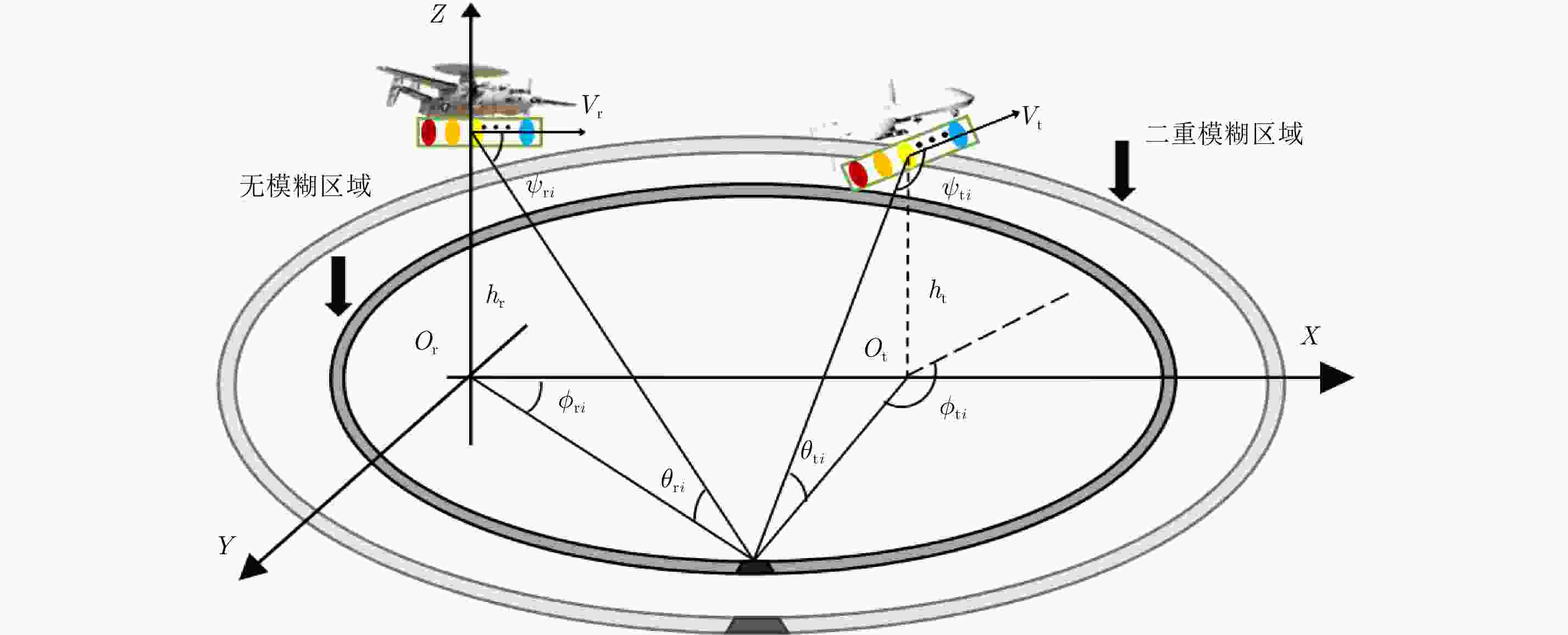
 下载:
下载:






